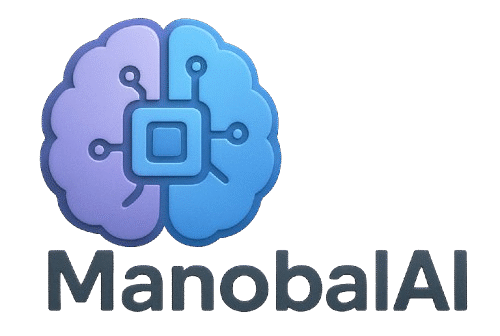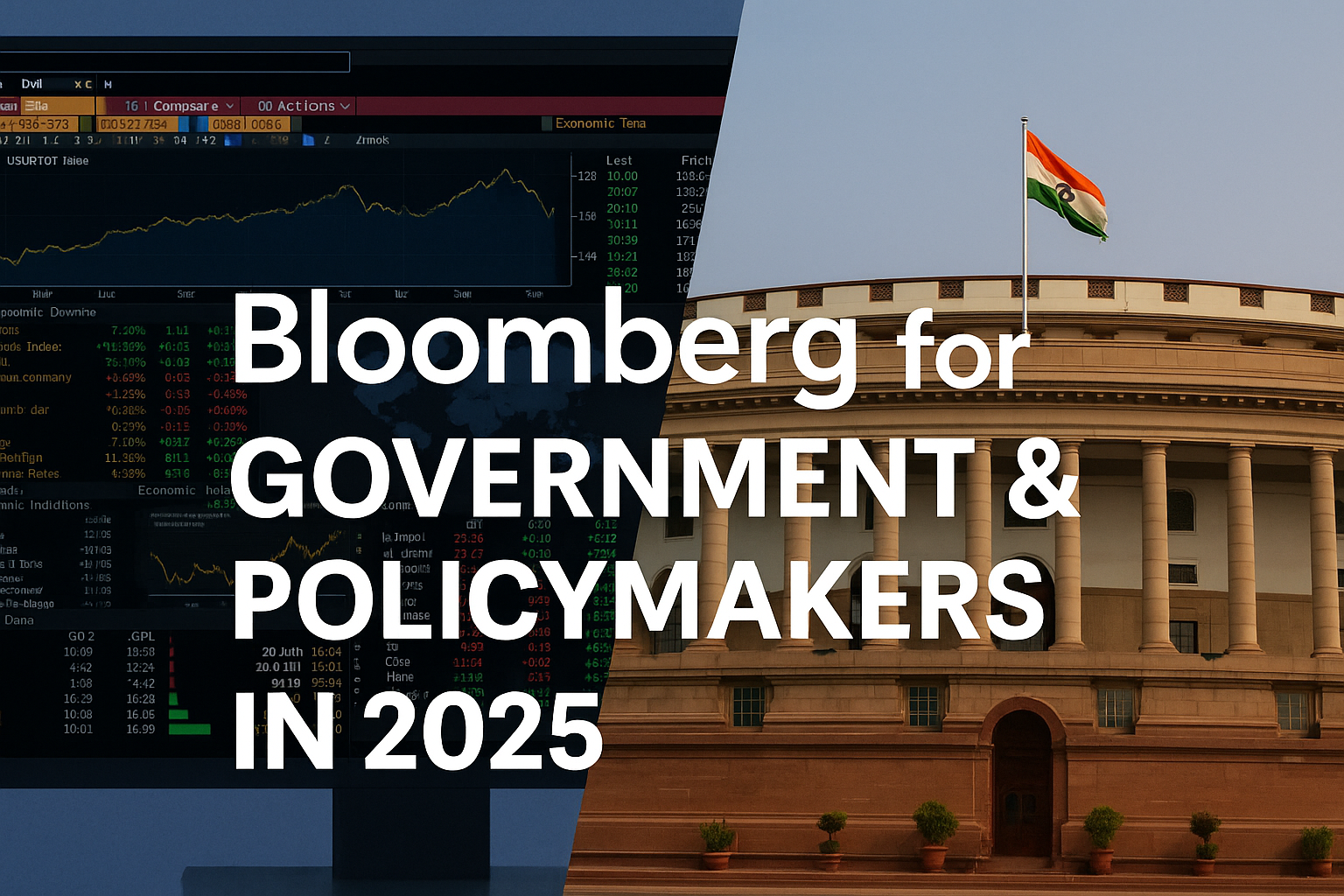Introduction: Bloomberg’s Role for Government and Policymakers
In the digital and data-driven world of 2025, making decisions without accurate and real-time data is no less risky. This is where the Bloomberg Terminal and Bloomberg’s other tools have become a powerful weapon for government officials, bureaucrats, and policy makers. It has become quite useful in 2025, no matter what the field is.

Governments work every day in critical areas such as economic development, fiscal policy, infrastructure projects, climate initiatives, and geopolitical tensions. For all of these, Bloomberg offers — reliable data, global analysis, economic forecasts, and policy-relevant insights.
In this blog we will know how in 2025 Bloomberg has become an indispensable platform for governments and policymakers.
1. Bloomberg Overview – What is Bloomberg Terminal and Platform?
Bloomberg is a global financial data and analytics platform that includes:
- Real-time financial data
- Global news coverage
- Market insights
- Economic indicators
- Interactive dashboards
- Visualization tools
Bloomberg Terminal is specifically designed for people who take high-stakes decisions — like finance ministers, central banks, trade policy experts, and regulators.
2. Key Benefits for Policymakers in 2025
| Feature | Government Use Case |
|---|---|
| Real-time Macroeconomic Data | Budget planning, monetary policies |
| Geopolitical Analysis | Foreign affairs, trade negotiations |
| Climate Risk & ESG Metrics | Green policies, SDG compliance |
| Sovereign Debt Tracking | National borrowing strategy |
| Custom Reports & Alerts | Timely updates on inflation, GDP, etc. |
3. Top Use Cases for Governments in 2025
A.Economic Policy Formulation
- Policy makers like RBI or Finance Ministry officials use Bloomberg:
- For real-time monitoring of GDP, inflation, and industrial production.
- For fiscal deficit projections and tax revenue analysis.
- To assess the impact of policy shifts of other countries.
Example: Bloomberg’s IMF forecasts, bond market sentiment, and global commodity prices are very helpful in India’s budget planning.
B. Global Trade & Foreign Relations
- Bloomberg provides:
- Trade flows between countries
- Tariff data
- Geopolitical risk assessments
- This data helps foreign policy teams to make bilateral trade agreements.
Proof: Bloomberg NEF data has been used in WTO and UN policy conferences.
C. Climate Policy & Sustainability
Every country is pursuing Net Zero goals in 2025. Bloomberg NEF (New Energy Finance) offers:
- Carbon pricing trends
- Climate financing data
- Green bond issuance stats
This data is used by ministries like MoEFCC (Ministry of Environment, Forest and Climate Change) and NITI Aayog for policy roadmap.
D. Sovereign Debt & Borrowing Analysis
Every government has to plan its borrowing strategy. On Bloomberg Terminal:
- Sovereign yield curves
- Credit ratings
- Bond maturity timelines
These insights help central banks and finance ministries for effective debt management.
E. Crisis Response & Emergency Decisions
At the time of COVID-19 or during geopolitical events like the Russia-Ukraine war, Bloomberg’s crisis dashboards and situation rooms help governments:
- Real-time alerts
- Supply chain risk analysis
- This helped in monitoring commodity price shocks.
4. Bloomberg’s Integration with Indian Government Agencies
RBI:
Bloomberg is used for monitoring monetary trends and liquidity.
Ministry of Finance:
Bond auction planning, capital market surveillance.
NITI Aayog:
Development data, startup ecosystems, climate innovation tracking.
Ministry of External Affairs:
Global diplomacy data, geopolitical risk tracking.
5. Bloomberg Tools That Policy Makers Use
| Tool | Description |
|---|---|
| Bloomberg Terminal | All-in-one dashboard with data, news, analytics |
| Bloomberg Economics | Macroeconomic research & forecasting |
| Bloomberg Government (BGOV) | U.S.-centric, but helpful for policy analysis frameworks |
| Bloomberg NEF | Energy & sustainability focused data |
| Bloomberg Law | Legal framework references for regulation builders |
| Bloomberg Connect | Collaboration tool between departments |
6. Real-Time Examples (Use Cases of 2025)
Example 1: India Budget 2025 Analysis
Using economic indicators from Bloomberg, MoF estimated revenue deficits and proposed GST adjustments.
Example 2: South Asia Flood Forecast
Climate dashboards predicted that the monsoon pattern would be intense. Jal Shakti Ministry did proactive dam water releases.
Example 3: Oil Price Shock
Crude prices spiked after Russia sanctions. Bloomberg alerts helped optimize energy imports.
7. Bloomberg for Global Governance (also for UN, IMF, World Bank)
Bloomberg data is also used in:
- UN SDG progress reporting
- IMF lending conditions tracking
- World Bank project monitoring
In 2025, multilateral agencies are also using Bloomberg’s ESG and sovereign ratings data to vet policy impacts across nations.
8. Training & Upskilling for Bureaucrats
Certification programs are also available for Bloomberg Government and Bloomberg Terminal which:
- are being integrated into training modules for IAS/IPS officers.
- Aligned with international fellowships such as Humphrey and Chevening.
9. Challenges in Adoption
| Challenge | Solution |
|---|---|
| High Cost of Bloomberg Terminal | Government-wide license sharing |
| Training requirement | Specialized workshops for officers |
| Data Overload | Custom dashboards & alerts only for relevant indicators |
10. Conclusion: Bloomberg may prove quite useful for Government & Policymakers
If policymakers in India and the world are to adopt smart governance and data-backed decision making, Bloomberg is a must-have tool.
People Also Ask (FAQs)
Q1: Is Bloomberg Terminal used in Indian Government departments?
Ans: Key agencies like Haan, RBI, Finance Ministry, and NITI Aayog are actively using Bloomberg.
Q2: What is the cost of Bloomberg Terminal?
Ans: The annual cost of a single Bloomberg Terminal is around $25,000–$30,000, but negotiated enterprise licenses are available for the government.
Q3: Does Bloomberg data help in India specific policies?
Ans: Absolutely. Real-time data of indicators like GDP, inflation, export-import, and tax revenue directly help in policy formulation.
Q4: What is Bloomberg NEF?
Ans: Bloomberg New Energy Finance — a tool that provides climate, ESG, and energy-related data.

